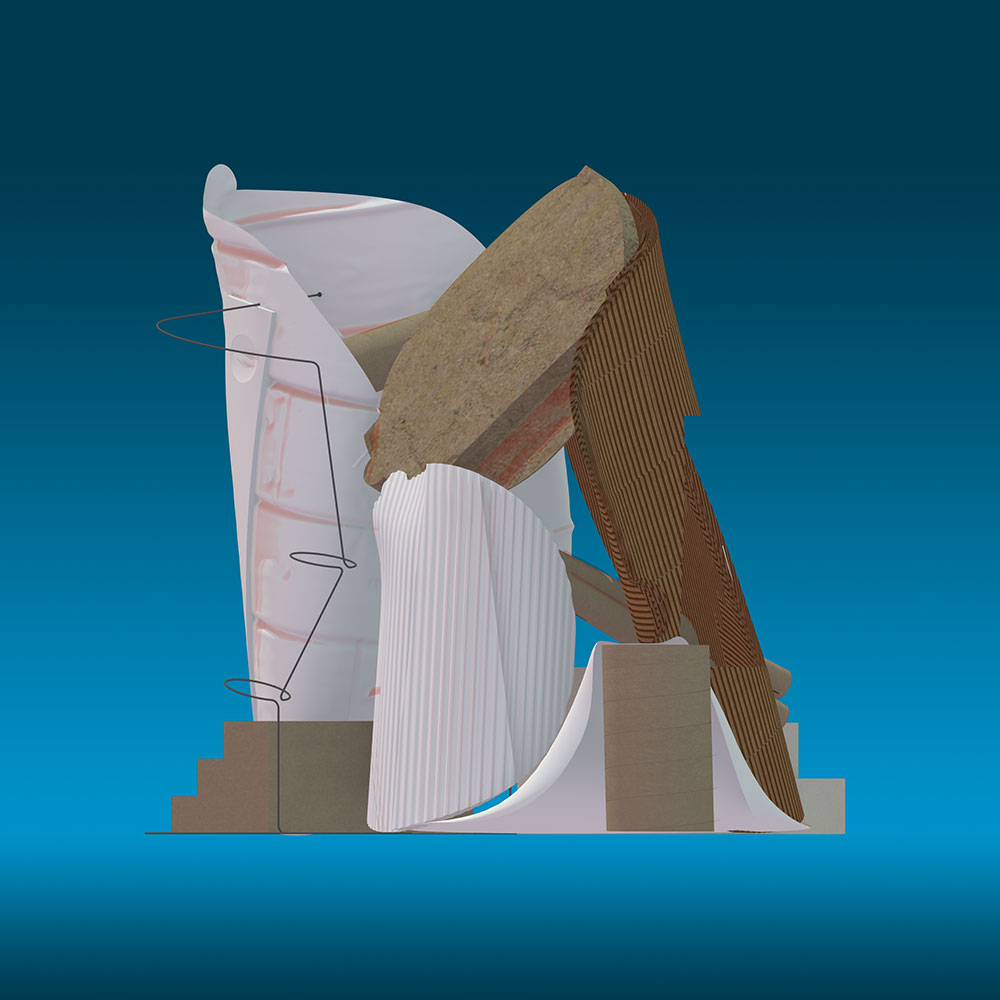


Column & Canopy
A paper pavilion series.
A paper pavilion series.
INFO
Date: 2016
Type: Research and Pavilion Proposal
Exhibitions:
For the Trees, University of Michigan, 2016
Inscriptions Harvard Graduate School of Design, 2018
Funding: University of Michigan Taubman College of Architecture and Planning Oberdick Fellowship
Project Team: David Eskenazi, Chris Doerr, Tony Gonzalez, Will Pellacani
Date: 2016
Type: Research and Pavilion Proposal
Exhibitions:
For the Trees, University of Michigan, 2016
Inscriptions Harvard Graduate School of Design, 2018
Funding: University of Michigan Taubman College of Architecture and Planning Oberdick Fellowship
Project Team: David Eskenazi, Chris Doerr, Tony Gonzalez, Will Pellacani
A cylinder supporting a circle on its edge is the geometric model used
to assemble different paper products: bristol paper, newsprint,
cardboard, and birch veneer. For each material, the model is constructred
at two sizes and the circle is curled.The gravitational resistance of the
material is documented at each size and compared.The models range
from 1 inch to 4 feet in height; they comprise the first series of the
project.
A second set of models duplicates the first set.This set, however, is constructed at the same height and is understood as a scale model of the first.
The two series are photographed then digitally modeled and rendered. The first series is scanned with a 3d scanner while the second is recon- structed from the original geometric model.The materials are substitut- ed by images of the materials: cardboard is geometrically modeled while veneer is replaced with wood logs.
Both series point at one another, as a kind of matrix ... As the series point towards each other, gravity becomes a stand in for truth, or the image of truth, depending on how one sees it. The images and models are mirrors.
A second set of models duplicates the first set.This set, however, is constructed at the same height and is understood as a scale model of the first.
The two series are photographed then digitally modeled and rendered. The first series is scanned with a 3d scanner while the second is recon- structed from the original geometric model.The materials are substitut- ed by images of the materials: cardboard is geometrically modeled while veneer is replaced with wood logs.
Both series point at one another, as a kind of matrix ... As the series point towards each other, gravity becomes a stand in for truth, or the image of truth, depending on how one sees it. The images and models are mirrors.




A Comparative Scale Sequence.
The left is a piece of paper rigidly resisting the effects of gravity at different sizes. On the right is a model of the paper on the left, always at the same size.

